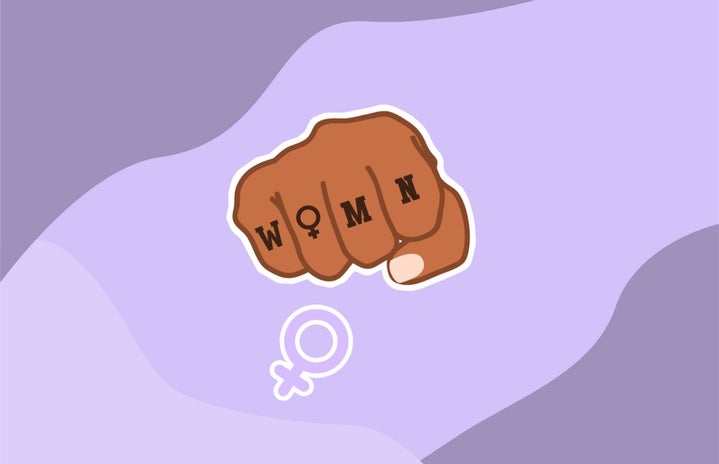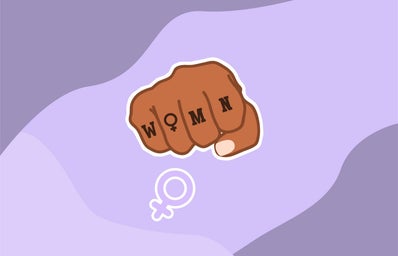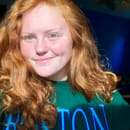For those of you who don’t know yet, March is Women’s History Month. The month is almost over and if you haven’t taken an opportunity to celebrate or look into women’s history yet, there’s no time like the present! My mother is a 5th grade teacher and at the end of February we had a conversation about incorporating women’s history into her daily lessons throughout March. We came up with the idea of “Woman of the Day,” where each day she will show a school-friendly video to educate her students on important women who have or are making history.
I am very interested in both history and feminism, so when this opportunity to research important women came about, I was thrilled to say the least. I spent a very long time researching and curating a school-friendly list for her class, but I ended up running out of space to talk about all of the fantastic women I found. (Not only this, but some of my initial picks were not all school-appropriate.) At the time I’m writing this article, my Woman of the Day series has been very well-received by my mother’s 5th grade class, so why not take it a step further? Below is a list of just some of the history-making women on my mind this month who inspire me and remind me of the strength and power women hold.
Florence Chadwick Swimmer
Florence Chadwick is an American swimmer known for her endurance. She is the first woman to ever swim across the 23 mile width of English Channel in both directions. A lifelong swimmer from California, she began competing in the water at the age of six. Though she never won a short distance race, she absolutely excelled in long distance swimming, specifically in open water. She embarked on her historical swim on August 8th, 1950, taking a whopping 13 hours and 23 minutes to complete.
You can learn more about Florence Chadwick’s life here:
https://biography.yourdictionary.com/florence-chadwick
Jane Goodall Primatologist
Jane Goodall’s ground breaking work as both a scientist and conservationist is why she is such an adored and remembered name today. Goodall is recognized for her field-research in Gombe studying chimpanzees. It was in Gombe where she discovered the truly complex nature of these animals, capable of forming relationships and making and using tools. She founded the Jane Goodall Institute in 1977, dedicating it to supporting continuous research in Gombe, and protecting the environment and the chimpanzees that live there.
You can listen to Jane Goodall talk about her work at TED here.
You can learn more about Jane Goodall’s life story here.
Oprah Winfrey Talk Show Host
A wearer of many hats, Oprah Winfrey is known for her bright personality and generosity on her talk show appropriately named “The Oprah Winfrey Show,” which aired between 1986 and 2011 for a whole 25 seasons. She started her very own book club, magazine, and even founded the Leadership Academy for girls in South Africa. Her philanthropy does not stop there as she donates to more than 30 charities including Women for Women International, the NAACP, the Worldwide Orphans Foundation, and the Born This Way Foundation. One of the most impressive parts of her life lies in her ability as a businesswoman to build herself from the ground up, all the way to becoming the first African American female billionaire the United States has ever seen.
You can listen to Oprah Winfrey talk about her career, life, and leadership at the Stanford Graduate School of Business here.
Rosalind Franklin Chemist
Rosalind Franklin made one of the most important discoveries in science to date, being responsible for the findings of DNA’s double-helix structure. This discovery is crucial because it lays down a foundation for modern biological and genetic studies. Franklin’s initial photograph of the DNA structure, known as “Photo 51” was stolen from her by a previous research partner Maurice Wilkins, who would go on to show it to Francis Watson and James Crick, who are accredited today with having made the initial discovery despite using Franklin’s work. Unfortunately, this wrongdoing wasn’t uncovered until after her death of ovarian cancer at the age of thirty seven.
You can learn more about Rosalind Franklin’s experience here.
https://www.nature.com/scitable/topicpage/rosalind-franklin-a-crucial-contribution-6538012/
Jane Bolin Judge
Jane Bolin is famous for many ground-breaking firsts being the first black woman to graduate from Yale Law School, to join the New York City Bar Association, and to join the New York City Law Department. Most notably however is her most famous recognition as the first black female judge in the United States. She served a role as an advocate as well, being a member of the board of the National Urban League, the National Association for the Advancement of Colored People, and the Child Welfare League. She deservingly received many honorary degrees from an assortment of colleges for her service as an advocate for the underprivileged and a trailblazer for women of color in law.
You can learn more about Jane Bolin’s life and struggles in this podcast episode of “Shmanners,”:
You also can learn more about her life in these articles:
https://www.essence.com/feature/jane-bolin-first-black-woman-judge-history/
https://ignitenational.org/blog/the-life-and-legacy-of-judge-jane-bolin
Ida B. Wells Journalist
A prominent force in the late 19th century and early 20th century, Ida B. Wells was a journalist and researcher who focused on social progress in the United States. She used her powerful writing to draw attention to social issues specifically of the struggles of African Americans living in the south at the time. Her activism extended off of the page and she joined protesters in boycotting the World’s Columbian Exposition whose committee locked out African Americans and negatively portrayed the black community. Her voice impacted people on an international level as she travelled across the world to tell of the injustice of the discrimination and lynching happening in Southern states.
You can learn about Ida B. Wells with TED-Ed here.
You can also learn about Ida B. Wells through this article.
Janet Guthrie Race Car Driver
Janet Guthrie’s life has been full of excitement starting her career as a pilot and ending it as a professional race car driver. She is the first woman to qualify and compete in both the Indianapolis 500 and the Daytona 500. She first competed in both races in 1977, and went on to compete in the Daytona 500 for the following two years. She is also regarded as the first woman to lead a lap in the NASCAR Winston Cup Series. She holds a place in the Women’s Sports Hall of Fame , the International Motorsports Hall of Fame, and the Automotive Hall of Fame.
You can learn about Janet Guthrie’s story and some of her own commentary here:
https://www.britannica.com/biography/Janet-Guthrie
Elizabeth Smith Miller Advocate
Otherwise known as “Libby,” Elizabeth Smith Miller was an advocate for the early women’s rights movement and daughter of Gerrit Smith, a known abolitionist and politician during Civil War Era America. One of the early topics the women’s rights movement tackled was dress reform. Elizabeth Smith Miller took the first step and became the very first woman to popularize women wearing pants. She wore a style of Turkish pantaloons visible under a knee length skirt. While this is far more modest than current fashion, this was an early progressive step towards the future.
You can take a look at the history of the women’s transition from wearing skirts to pants here:
You can learn more about Elizabeth Smith Miller here:
http://www.nyhistory.com/gerritsmith/esm.htm
https://www.nps.gov/wori/learn/historyculture/elizabeth-smith-miller.htm
Junko Tabei Mountaineer
Junko Tabei is the first woman to climb Mount Everest, but she prefers to be referred to as the 36th person to accomplish the task. Coming from Japan in the mid-20th century, Tabei faced a lot of discrimination as many would doubt her capabilities. She was a passionate climber, falling in love with activity on a class trip to Japan’s Mounts Asahi and Chausu. Her passion led to not only her expedition on Mount Everest, but she also became the first woman to climb the Seven Summits in 1992, having reached the highest point in all seven continents.
You can learn more about Junko Tabei’s life and accomplishments here:
https://www.adventure-journal.com/2020/12/junko-taibei-first-woman-climb-everest-seven-summits/
Frida Kahlo Painter
Mexican artist, Frida Kahlo’s genius started out of unfortunate circumstances. Shortly after attending the National Preparatory School in Mexico City, she was severely wounded in a tragic bus accident. It was in her time spent recovering in her full body cast that she would learn to paint, typically doing self-portraits. She would eventually move to America, befriending some of the other surrealist painters there such as Andre Brenton. Her work was exhibited in a variety of exhibitions, many of her paintings shown in New York. Her work is characterized by metaphorical expressions of her deep thoughts, feelings, and physical and psychological pain.
You can learn about Frida Kahlo’s life here:
You can also view some of her paintings here.
Jane Elliott Teacher
Jane Elliott is internationally known for her diversity training exercises that allow her participants to get a better understanding of what discrimination feels like. She initially started her project during her teaching career following the assassination of Dr. Martin Luther King Jr. in 1968. In this experiment, which she initially did with her elementary school students, she told her students that they were inferior or superior based on their eye color and treated them accordingly, (i.e. taking away some recess privileges for students with brown eyes). The following day she’d switch who stood inferior or superior, so the other half of the class would get an understanding of either perspective. This demonstration on discrimination has been repeated hundreds of times and allowed for Elliot to receive the National Mental Health Association Award for Excellence in Education.
You can watch the documentary detailing her demonstrations on racial discrimination here:
You can also learn more about Jane Elliot on her website here.
June Bacon-Bercey Meteorologist
June Bacon-Bercey is a woman who has withstood the challenges of being a woman of color in a STEM field. She was the first African American woman to graduate with a bachelor’s degree in meteorology from UCLA. This was after facing much discrimination, such as being undermined by an academic adviser and told that she should just go into home economics. She would go on to work as weather analyst and forecaster for the National Oceanic and Atmospheric Administration’s National Weather service and take up research studying the effects of atom bombs on the atmosphere. Bacon-Bercey eventually took up the role as chief meteorologist at WGR-TV in Buffalo, N.Y appearing on live television. From the position she was recognized by the American Meteorological Society with its Seal of Approval. As a passionate supporter of women in STEM, she also served on the American Meteorological Society’s Board on Women and Minorities.
You can learn more about June Bacon-Bercey here:
Winona Laduke Environmental Advocate
Internationally recognized, Native American activist Winona Laduke is known for her promotion of sustainable development, renewable energy and food sovereignty. She also advocates for the ongoing problem of climate change and seeks to find environmental justice within indigenous communities. She has released a plethora of publications on these issues, speaking on a global level. Laduke has even held a presence in politics, as a two-time vice presidential candidate who ran with Ralph Nader for the Green Party. She’s been recognized by many organizations for her work as she was nominated by TIME as one of America’s fifty most promising leaders under forty years of age and was inducted into the National Women’s Hall of Fame in 2007.
You can listen to Winona Laduke with TED speak here.
You can also learn more about Winona Laduke’s life here.
Valentina Tereshkova Astronaut
Valentina Tereshkova is the both the youngest and first woman to ever fly into space. A cosmonaut from Russia, Tereshkova was initially picked for the job after she volunteered because she had experience as an amateur parachutist. She had no prior pilot training prior to applying for the job. She first embarked on her journey in 1963 in the spacecraft Vostok 6 which orbited the Earth a whopping 48 times before she came back down. Following this experience, Tereshkova took on roles of leadership directing the Soviet Women’s Committee in 1968, and acting as a member of the Supreme Soviet Presidium from 1974 to 1991.
You can learn more about Valentina Tereshkova’s astronomical journey here:
https://www.britannica.com/biography/Valentina-Tereshkova
Ada Lovelace Computer Programmer
Ada Lovelace was not only the first female computer programmer, but the first computer programmer ever. Daughter of the Lord Byron, a renowned poet and politician, Lovelace grew up in a rich household that afforded her an excellent education in mathematics early on in her life. She would go on to apprentice Charles Babbage, who she worked with on one of the first computers. She would expand on Babbage’s work and program the machine. She wrote articles explaining her thoughts on the future of computers, rightly believing that computers would expand far further than calculating math equations.
You can read more about Ada Lovelace at the Computer History Museum here:
https://www.computerhistory.org/babbage/adalovelace/
https://www.biography.com/scholar/ada-lovelace
Women’s History Month is a month to celebrate the accomplishments of both women in the past and present as we’ve had to overcome many hurdles on the basis of our gender. It’s crucial to recognize that many women have done amazing things, and have had to do it in the face of discrimination. I have really enjoyed that this research has given me the opportunity to diversify my understanding of history, further than any textbook has been able to educate me before. While March is quickly coming to a close, the importance of recognizing the ever-growing effect that women have globally had on society is year-round.



